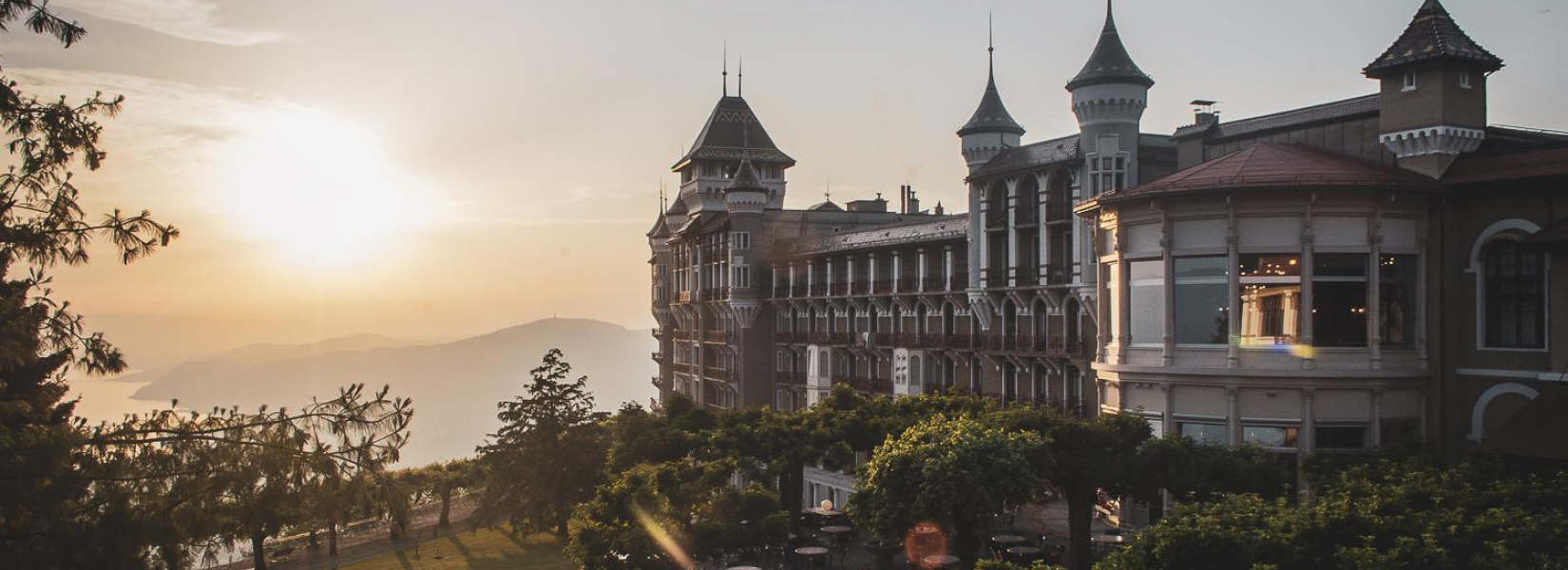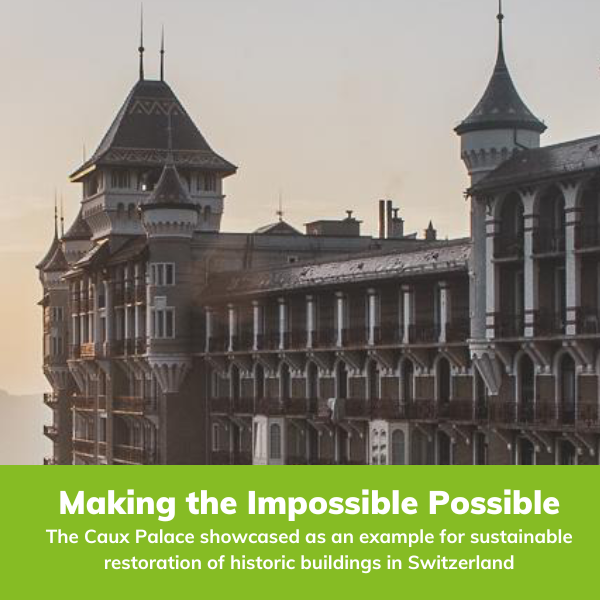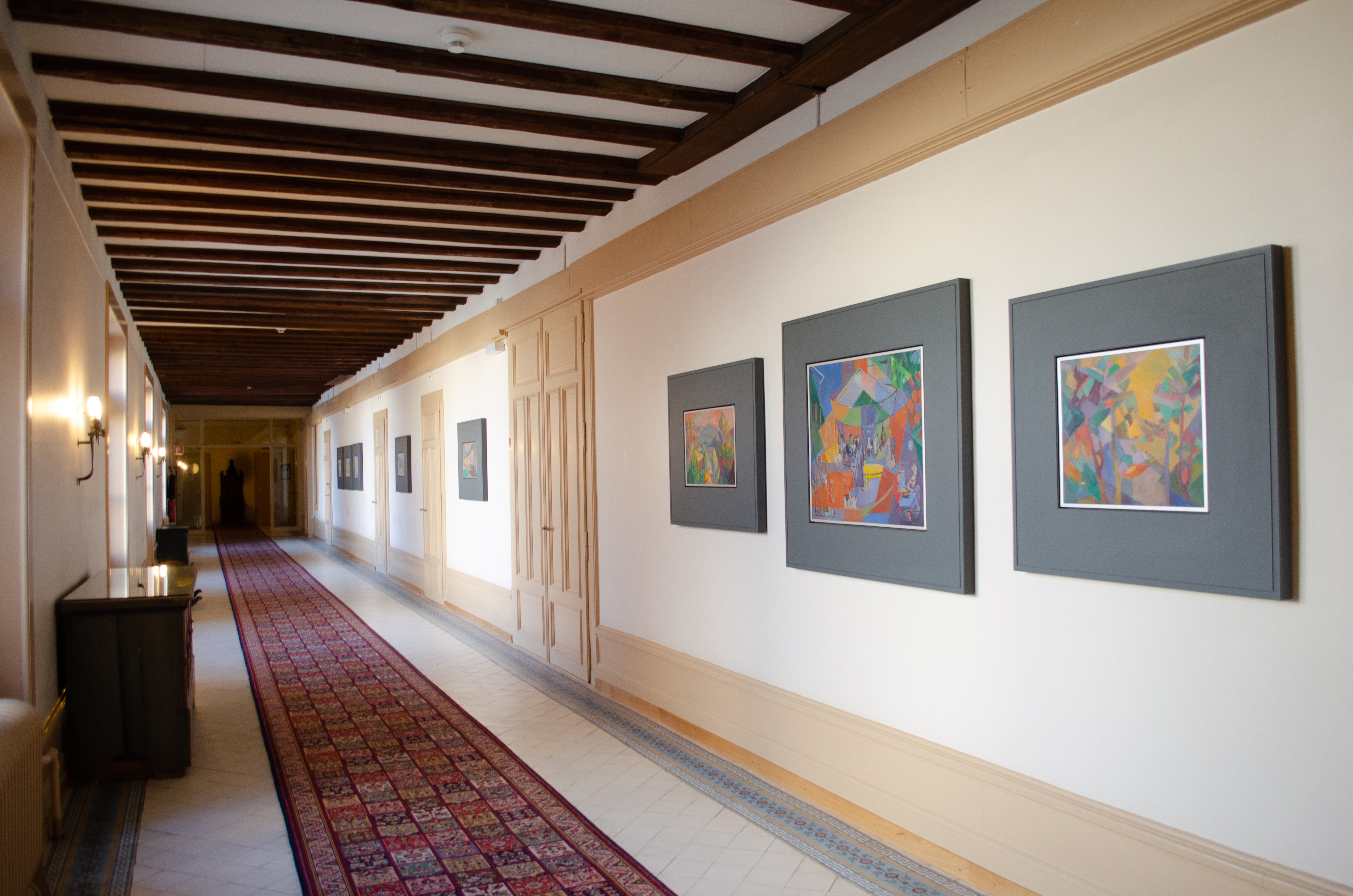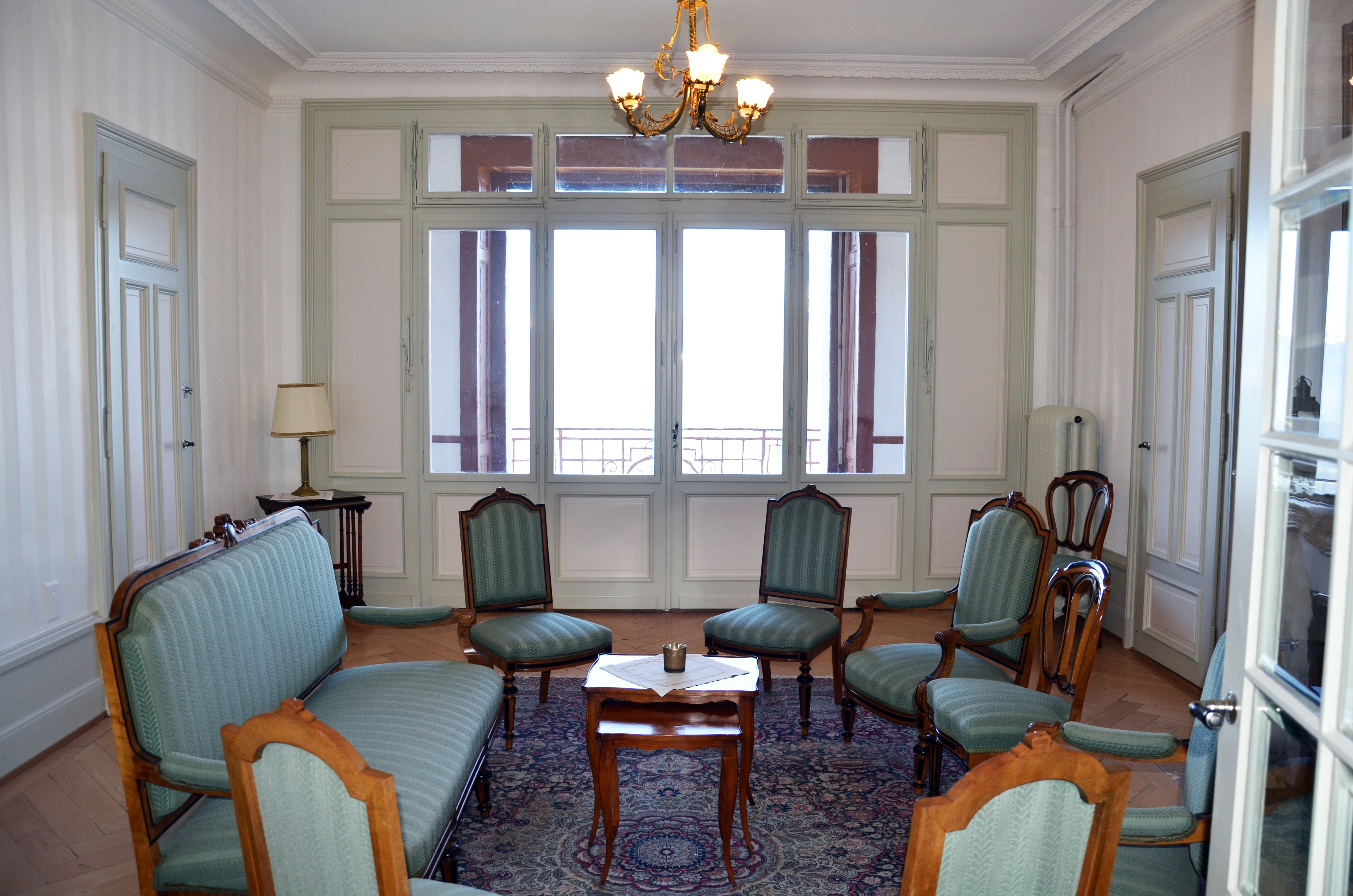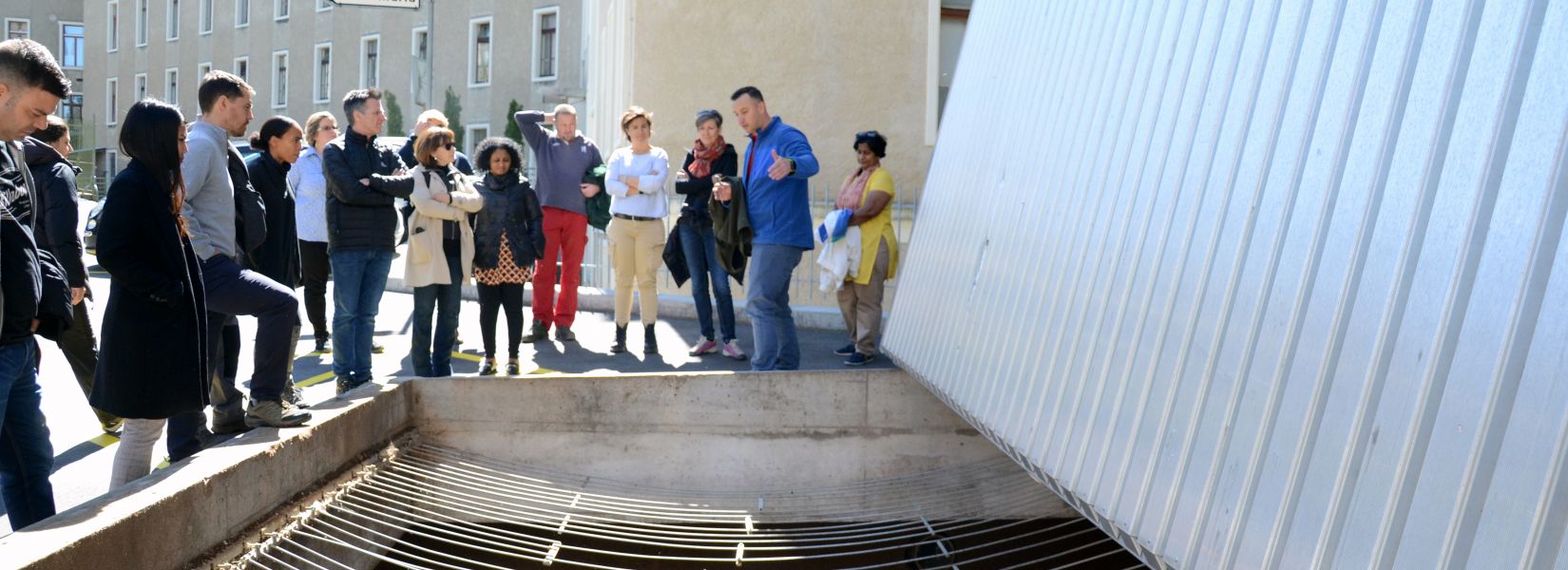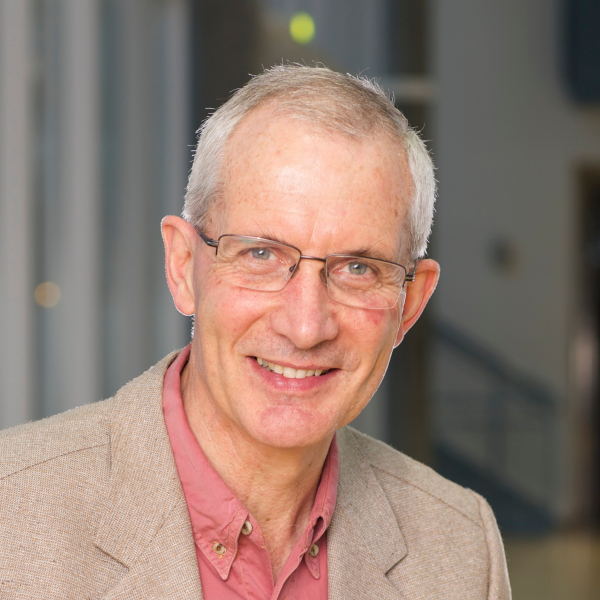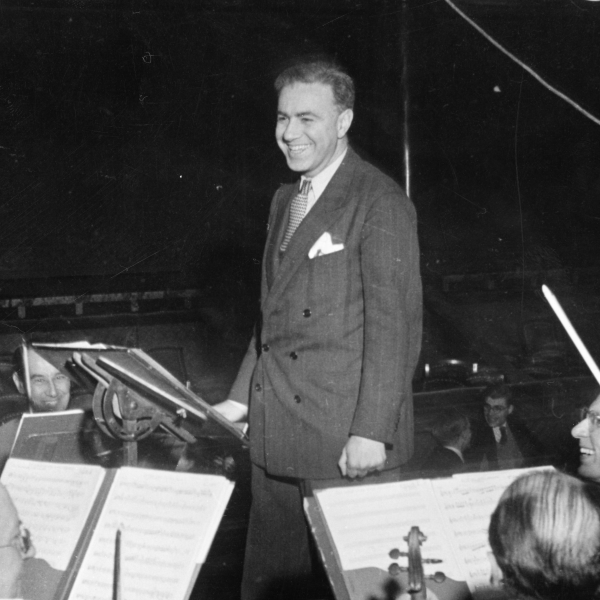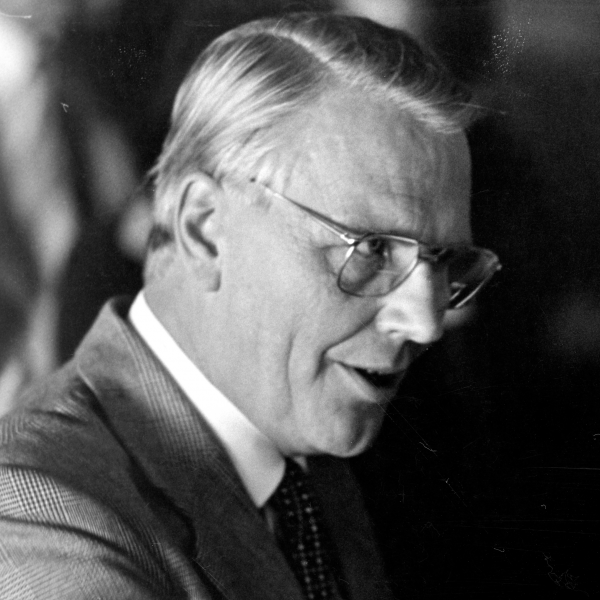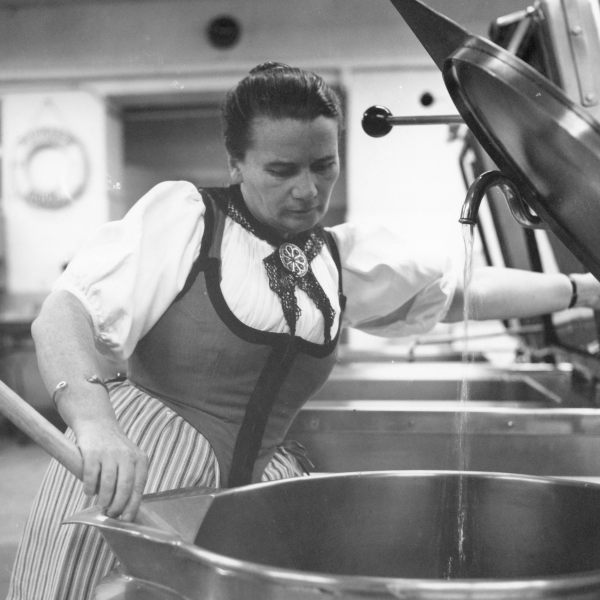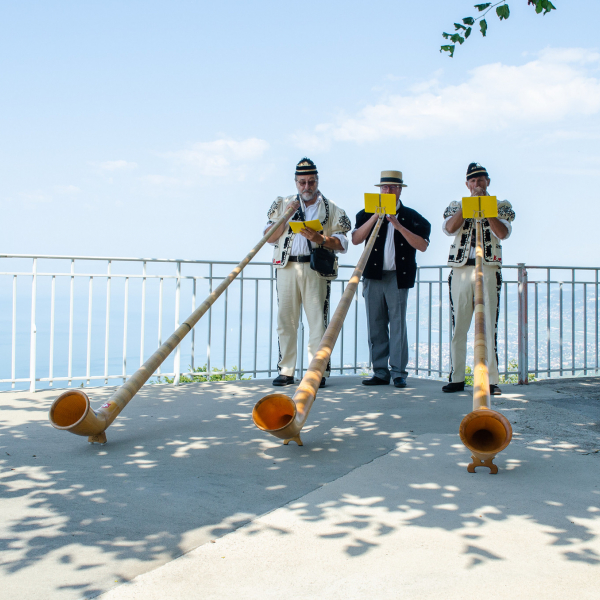Making the Impossible Possible
The Caux Palace showcased as an example for sustainable restoration of historic buildings in Switzerland
28/02/2023
When you own a unique historic building like the Caux Palace with its 225 rooms, 1,600 windows and 1.6 kilometres of corridors, reaching carbon neutrality by 2050 seems a Herculean task. But each step on the way is important. Over the last years IofC Switzerland has worked continuously on improving the ecological sustainability of its flagship building.
In its current edition, the top real estate magazine in French-speaking Switzerland, immobilier.ch, showcases the Caux Palace as one of five positive examples of how historic buildings can be preserved and renovated, while improving ecological sustainability.
Read the full article featuring the Caux Palace (in French)
Restoring historic buildings keeps local history alive and anchors them in their communities. This is certainly true of the Caux Palace. Its prominent position high above Lake Geneva and its long and rich history attracts tourists and visitors.
Restoration is also a step towards ecological sustainability because it maximizes the use of existing materials and reduces waste and consumption.
Sustainable living is part of IofC Switzerland’s mission, as is preserving the Caux Palace. The renovation of the Caux Palace has been carried out gently and subtly to preserve its heritage. This work has included:
- Progressive insulation of the 1500 m2 of flat roofs. A study is underway to evaluate the installation of invisible (flat) solar panels
- The regulation of heating in certain areas such as corridors and staircases.
- Regulation of heating in such areas as the corridors and staircases.
- Reduction of the hours when the heating is on.
- The use of efficient thermostatic valves and of water flow limiters.
- Improved seals on doors and windows and insulation of blinds.
- The replacement of lighting with LEDs.
- An awareness campaign for all occupants.
- A multitude of small measures which, when taken together, represent significant savings.
But the biggest milestone on the Foundation’s road to sustainability has probably been the replacement of the Caux Palace’s oil-fired heating system with a wood-fired one, fed 80% with forestry chips and 20% with oil. The wood comes from the region, thereby reducing CO2 emissions from transport and supporting the local economy.
Setting up the new system in the confined space of the Caux Palace’s basement was not an easy task. The project began in July 2015 and the system was inaugurated in October 2016. It saves about 600 tons of fossil-fuel-based CO2 every year.
We are pleased and grateful that our efforts to maintain and restore the Caux Palace have been recognized in the region. The Foundation will continue to ensure the preservation and sustainability of this unique place.
Read more:
- https://www.immobilier.ch/fr/actualite-magazines/e-paper (p. 9)*
- https://www.iofc.ch/stories/behind-scenes-caux-palace-meticulous-work
- https://www.24heures.ch/le-caux-palace-change-ses-grandes-chaudieres-520927066202
By Ulrike Ott Chanu / Photo top: Paula Mariane
